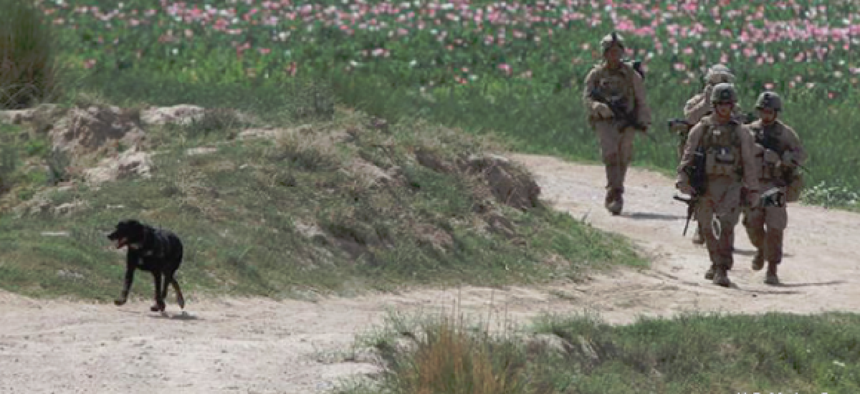Video game trains soldiers to work with dogs


Connecting state and local government leaders
Using the Virtual Battlespace platform and a Kinect controller, a computer scientist at the Naval Research Lab built ROVER, a simulator that allows human handlers to practice emergency response with canine partners.
“There are hundreds of games if you want to teach a soldier to shoot, but there are no games for training dogs,” said Adam Moses, in response to a question about what inspired him to create ROVER, a simulator that allows human handlers to practice emergency response with canine partners.
OK, maybe the Marines had something to do with it, too.
“We were approached by some folks at the Office of Naval Research,” said Moses, a computer scientist at the Naval Research Laboratory. The Marines were looking for ways to facilitate human-canine training.
The dogs get a month or two of training, but then the handlers are shipped out and they don’t see the dogs for seven or eight months, explained Moses. The Marines wanted something easy to deploy so that handlers could “train with something virtual until the real thing showed up,” he said.
Moses built a game using the Virtual Battlespace platform. After spending hundreds of hours watching tapes of dogs and their handlers in Iraq, Moses designed a scenario in which a dog is tasked with searching for an improvised explosive device (IED). The player communicates with the dog using a Kinect controller.
The program manager gave Moses a list set of eight gesture commands and two whistle commands. Then Moses wrote a “skeleton” program so the gesture commands are issued with the controller and the whistle commands via a button on the Kinect controller.
“We weren’t really able to do finger commands,” Moses said, because “Kinect didn’t have the fidelity to capture fingers.” But since Kinect has been updated recently, Moses is hoping he can add finger commands in the future.
The program isn’t limited to just issuing commands. To successfully locate the IED, the handler also needs to read the dog’s behavior. If, for example, the dog’s attention is drawn to an alley and the handler misses that behavior and rushes the dog ahead, the dog may “unlearn” techniques it has been taught.
When a dog is assigned to a handler who isn’t fully up to speed, said Moses, “he can actually break the dog, untrain the dog.” If, on the other hand, the handler can spend time practicing with ROVER for a week or two, he adds, “you could cut down a lot of retraining you would otherwise have to do.”
If he can get more funding, Moses would like to expand ROVER to include more features, such as having trucks going by and other humans on the scene. He’d also like to create additional scenarios.
“We are hoping to get more interest in the community at large and not just bomb detection,” Moses said. Among the most obvious communities of interest would be police departments, search and rescue teams, first responders and border protection personnel.
NEXT STORY: Giving robots a (better than) human touch




